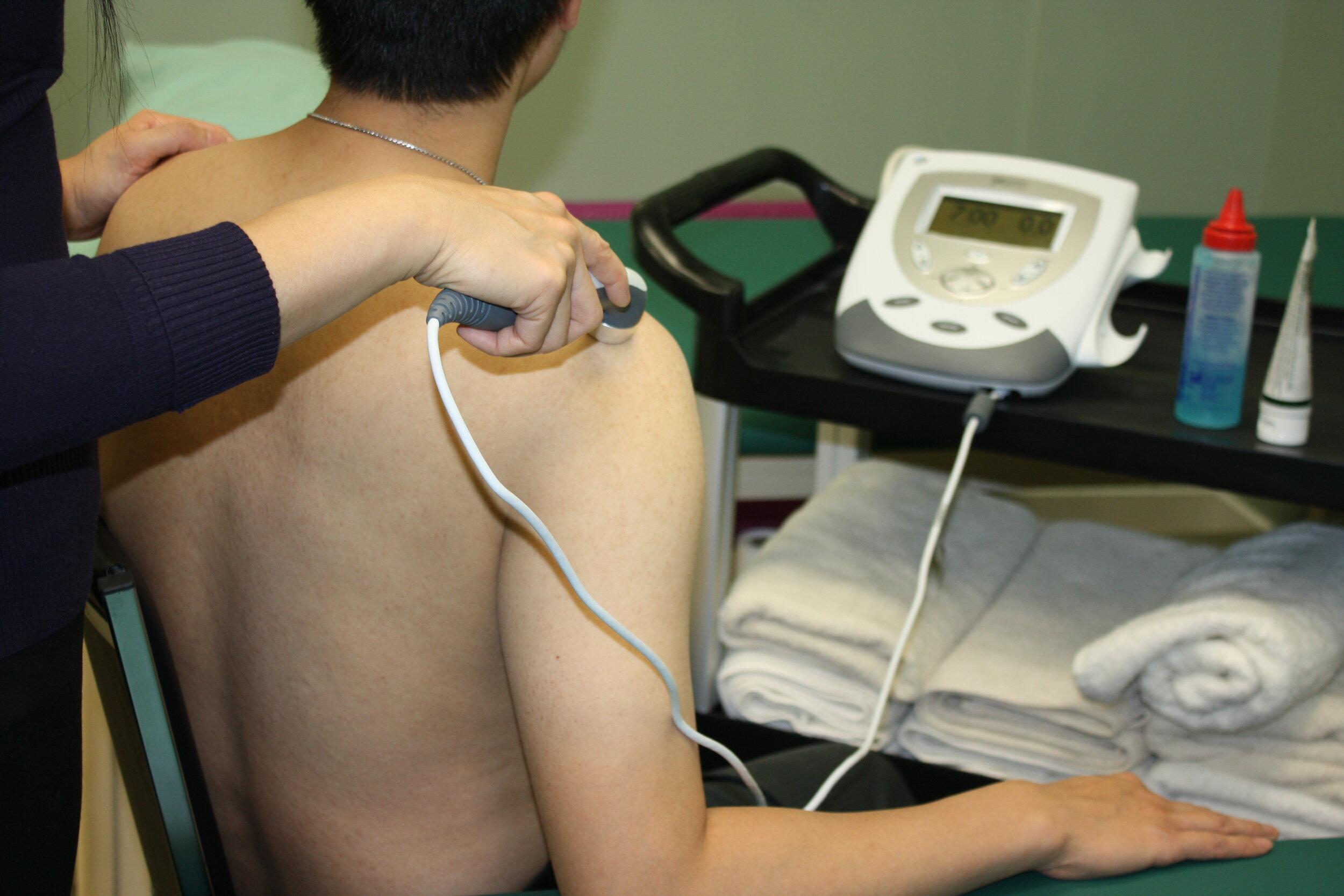Radial Shockwave Therapy
Why might radial shockwave be right for me?
Radial shockwave Therapy is a new alternative treatment that utilizes controlled pressure waves to stimulate the damaged tissues. There has been an extensive amount of research done on the effectiveness of shockwave therapy on heel spurs (plantar fasciitis), achilles tendonitis, frozen shoulder, trigger points in muscles, stress fractures and tennis elbow.
Stortz Medical Shockwave Unit made in Germany used at the clinic
Benefits:
No surgery required
No side effects
Increases healing process
Effective for chronic pain
No medication required
How does radial shockwave therapy work?
Shockwave uses extremely high-energy acoustic waves that are transmitted through a headpiece that is applied to the surface of the skin. The headpiece emits very strong and short energy pulses that will produce a mechanical effect on the area of interest. This mechanical force will then stimulate cells that promote healing in bone and connective tissue. Shockwave therapy also helps breakdown any built up calcification and soft tissue. In addition, it also initiates an inflammatory response, which will increase circulation and blood flow to the area.
What are treatments like?
For the best results, approximately 3-5 treatments are required and most people feel an improvement after the first treatment is complete! Shockwave requires the use of any water-based medium and is applied over the area of interest for approximately 5 minutes. During the treatment, there may be some discomfort or pain, but it is well worthwhile!
Have any questions? Contact us via email or phone for more information!
Ultrasound Therapy
Ultrasound therapy for shoulder tendonitis
Ultrasound Therapy is a high frequency (greater than 20,000Hz) sound wave that enters the body and travels through tissue by absorption, reflection, and refraction. Ultrasound produces thermal and non-thermal effects. High-intensity ultrasound produces thermal effects such as increase tissue temperature, increase circulation, reduce pain and muscle spasm, and soften scar tissue (dysfunctional tissue). Low-intensity pulsed ultrasound produces non-thermal effects such as facilitates tissue healing by altering the cell membrane permeability, increase histamine release, increase rate of protein synthesis, increase macrophage responsiveness.
Electrotherapy
Electrotherapy is low frequency electrical current that stimulates sensory and motor nerve fibres. Transcutaneous Electrical Nerve Stimulation (TENS) is electrical stimulation of sensory nerve fibres for pain relief. Two theories of pain control using TENS are gate control theory and opiate-mediated theory. According to the gate control theory of pain, transmission of a painful stimulus to the brain from the spinal cord is inhibited therefore providing pain relief. The perception of pain decreases when the electrical stimulation is on and carries over after electrical stimulation has been turned off due to interruption of the pain-spasm-pain cycle. According to the opiate-mediated theory of pain control, electrical stimulation promotes the release of the body’s own natural pain killing substances known as endorphins into the body therefore providing pain relief. Neuromuscular Electrical Stimulation (NMES) is electrical stimulation of motor nerve fibres for enhancing muscle performance. Electrical stimulation of motor nerve fibres promotes voluntary muscle contractions which help to increase muscle strength and endurance for muscle atrophy and muscle re-education.
Electrostimulation for lower back pain
Non-surgical Spinal Decompression Therapy
Non-surgical Spinal Decompression Therapy is a computerized traction therapy for the relief of back, neck and radicular pain. The difference between standard traction and spinal decompression is the stretch/relaxation component. Standard traction has not been shown to have long lasting effects because of gravitation pull once we stand up. Some patients will develop muscles spasms through standard traction due to the constant distraction force. By having a relaxation phase, spinal decompression allows the muscle to accommodate to the stretch effects therefore producing a lasting treatment. It is used mainly to treat disc bulges/herniations, people with moderate/severe osteoarthritis in the spine, stenosis in the spine. It is most effective in combination with physiotherapy or chiropractic treatment.
Low Level Laser Therapy
Low Level Laser Therapy is cold laser that works by delivering billions of photons to the tissue surface driving this energy down to the damaged cells that use this energy for tissue repair. Low level laser therapy stimulates vasodilation and lymphatic drainage, regulates the sodium-potassium pump which causes decrease inflammation, decrease pain, and increase tissue regeneration and healing. On a celluar level, low level laser therapy has been shown to stimulate mitochondrial effects causing increase in ATP activity. Increasing activity in ATP stimulates a healing response through cell replication in the stimulated region.
First Markham Physiotherapy and Rehabilitation has acquired a powerful low level laser unit producing a combined energy output of 415mW of power. The laser we have is comprised of 670nm (red), 850nm (near infrared), and 950nm (infrared) laser lights which can stimulate different depths of penetration covering a broad spectrum of cells. Both the chiropractor and physiotherapist are trained to use the low level laser unit.







